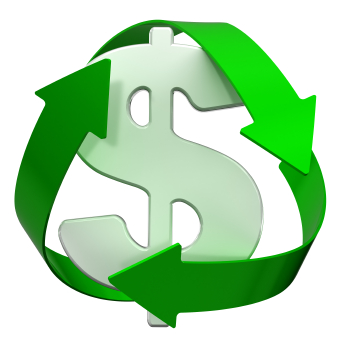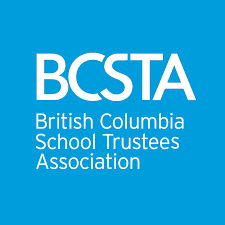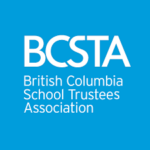Kootenay Boundary's big, fat, million dollar 2014 recycling bonus
Just when the Regional District of Kootenay Boundary (RDKB) needs a little cash to lengthen the life for the McKelvey Creek Landfill in Trail by 26 years—namely by composting organics rather than burying them—more than $1.2 million will soon be saved by the RDKB each year thanks to provincial legislation that will require industry to take full responsibility for the paper and packaging they produce.
In other words, in May, 2014, industries will take over blue bin recycling programs right across the province.
“Right now, across the region, we pay anywhere from $1.2 to $1.4 million per year to recycle packaging,” said Alan Stanley, the Director of Environmental Services for the RDKB. “But by mid-2014 we’re not supposed to be paying it anymore.”
For Stanley, one of the main reasons this is important is to free up money to fund an organics diversion program for the regional district, reducing the amount of waste that goes to the landfill by about half, but that’s another story.
Most of us are already familiar with many product stewardship or extended product responsibility (EPR) programs, for example the electronics and beverage container recycling at the Trail bottle depot, old tires and used oil at the mechanics, and so on. The big difference here is scale, since “paper and packaging” encompasses just about everything that’s left in the blue bin.
Right now, producers who introduce paper and packaging waste into the market place are submitting stewardship plans or participating in industry consortiums like Multi-Materials BC.
“They have to figure out how they’re going to get the money and how to administer it. None of that money touches government hands,” Stanley explained.
“Basically, you have to pay for your waste,” he said, capturing the logic of the provincial legislation that will put the onus on producers. He acknowledges that ultimately the cost is borne by the consumer, “but still, that’s fair enough,” he argued.
He asked, why should people who don’t buy electronics have to pay for their disposal? Why should people who don’t buy tires have to pay for their disposal? And so why should people who don’t buy packaging have to pay into a recycling program?
Stanley also explained how this legislation feeds back into product design, forcing businesses to design for the environment: “If there’s a product that’s high toxicity and hard to recycle, but we send it back to them, then they have to deal with it. If it’s busting their chops, they’ll redesign the darn thing.”
“This has happened already,” he said. “In electronics, for example, five or six years ago just about every laptop had mercury in it. Now mercury has worked it’s way out.”
Stanley isn’t sure how the new program will look here in the RDKB come 2014, since it will be new across BC at the same time. In general, though, industry is expected to just pick up the same services already developed by districts and municipalities. “They’re going to carry on with the existing levels of service, and will likely just take it over. They don’t want to disturb the service,” Stanley said.
“Transition is the big word. Maybe we’ll continue to do the service and they’ll pay us, but that’s not our preference.” He said it will be more efficient, especially in the long run, for the industry’s stewardship consortiums to directly contract the recyclers.
It’s not perfect, he acknowledges, noting that the industry consortiums are required to recycle their end-of-life products, but that seriously limits the degree to which the second priority ‘R’—reuse—is applied. (The first priority, of course, is to reduce!)
Stanley understands the woes of the thrifty-minded like John Greene of Rossland Hardware who just wanted an old cord from the pallets of computers set to be recycled. But, Stanley reported the people who run that program “basically said no, it’s for destruction.” The electronics are ground up, smelted, and the metals retrieved. Period.
“It’s a lot of energy,” Stanley agreed, and other programs, such as non-profits trying to get old but functional computers to the third world, for example, are also shortchanged unless they can intercept the old tech first.
Another hurdle that paper and packaging stewardship won’t face, but that other EPR programs have, is getting the consumer to change habits. Each kind of waste needs to find its own particular destination, which means everyone has to develop new habits to get outputs to their proper destinations.
“Sorting out the bits is a part of life,” Stanley said. “There’s this dream that everyone can take every single thing to one spot, but I never thought that was a realistic objective.”
“No matter how well these things are designed, there’s always going to be some responsibility on the consumer to know where to take some of this stuff,” he said.
“There’s never going to be a perfect solution for everybody. You’re a consumer in this modern world of commerce we’ve built where you can get anything at anytime, anywhere—grapes from Chile, beer from Belgium, computers from mainland China.”
“No one would imagine going to the same place to buy a new computer, a weed eater, and a case of beer,” he laughed. “But somehow there’s this mentality that is drawn to the idea of one place to get rid of things you don’t need anymore.”
When the 2014 switch takes place, however, it’s unlikely we’ll notice much of a change at all.
Stanley added, “We’re going to be pretty harsh with monitoring performance to make sure they’re doing it [recycling] at least as well as we’re doing it now.”
Overall, Stanley said, product stewardship programs are a great leap forward. Now, he said, “If you don’t buy electronics, you don’t pay a dime for it, as opposed to our programs that you are paying for, even if you don’t use them.”
In less than a year and a half, we won’t be paying a dime for paper and plastic packaging either—unless, of course, we use them.

























Comments